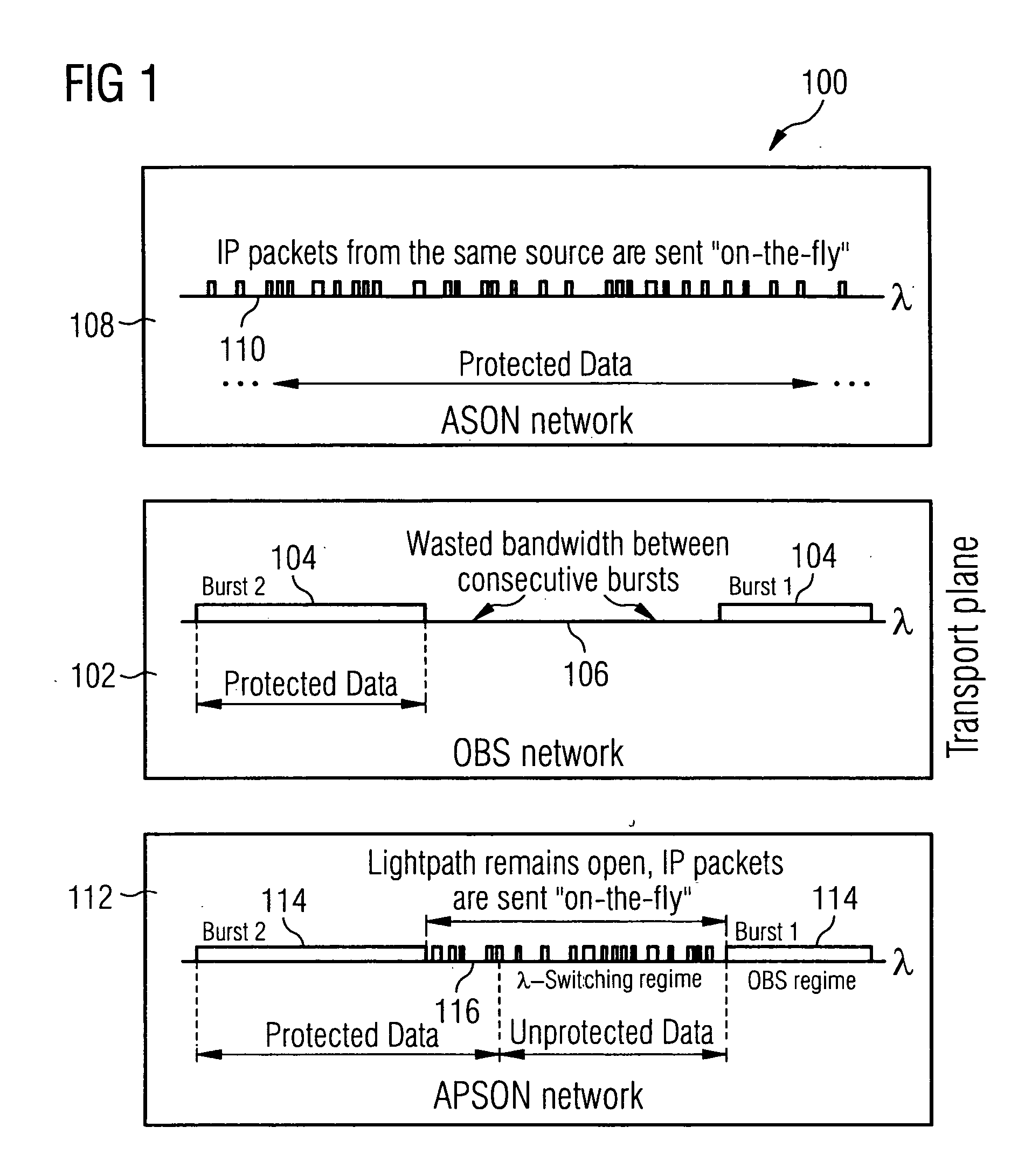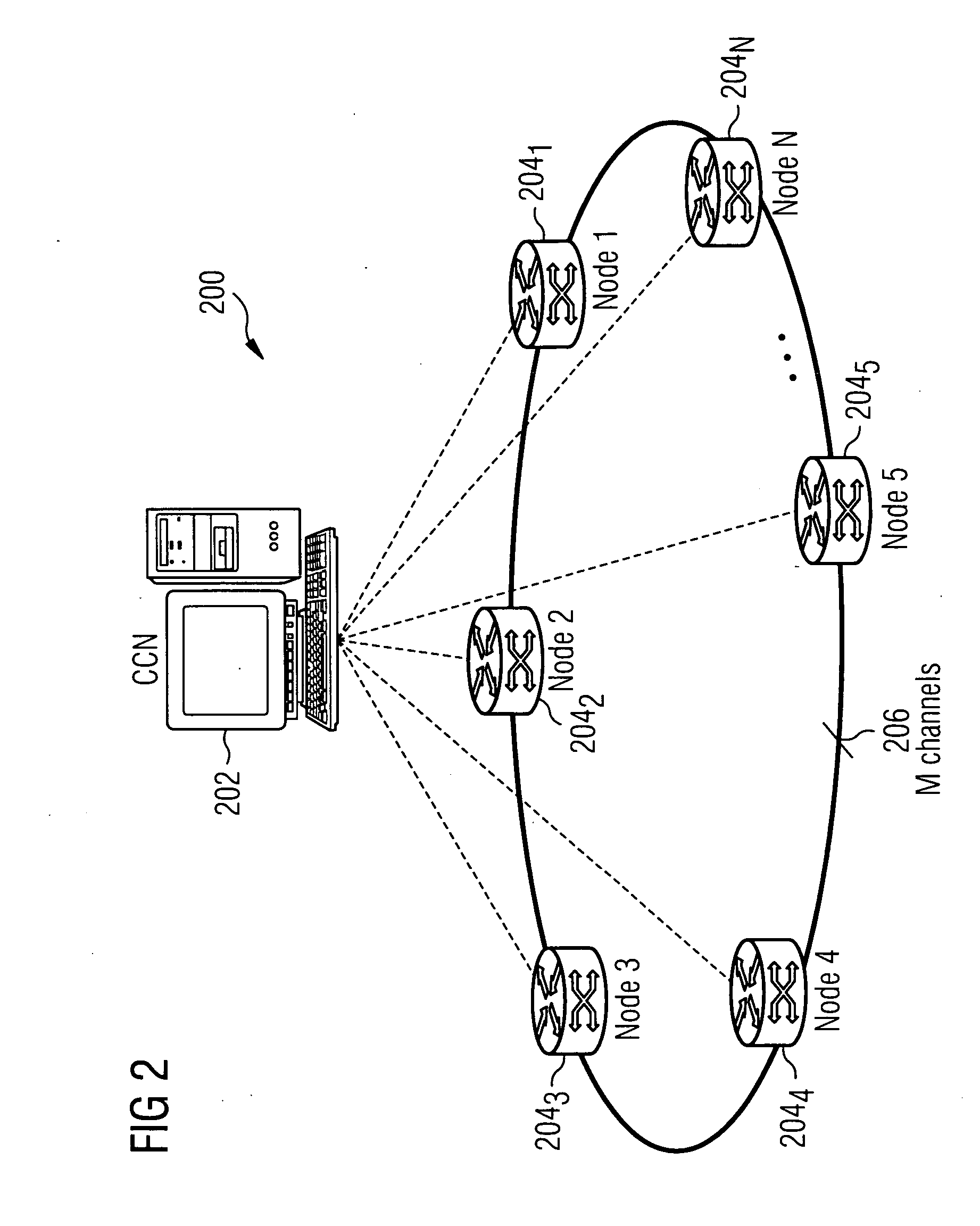Ring network for a burst switching network with centralized management
a technology of centralized management and burst switching, applied in data switching networks, digital transmission, electrical devices, etc., can solve the problems of more difficult control of obs and unstructured sons, and achieve the effect of reducing the number of wavelengths needed
- Summary
- Abstract
- Description
- Claims
- Application Information
AI Technical Summary
Benefits of technology
Problems solved by technology
Method used
Image
Examples
Embodiment Construction
[0031] In a centralized APSON architecture 200 shown in FIG. 2, a central node (CCN) 202 is in charge of coordinating network signalling tasks such as path setup and teardowns. In contrast, in a de-centralized APSON architecture signalling messages are exchanged among network nodes without the need for a central node to coordinate them. This invention report presents an APSON ring concept based on a centralized APSON architecture.
[0032] In the Figure, it is assumed that the centralized ring APSON architecture includes N nodes 204, . . . in and M channels 206. It should be kept in mind that FIG. 2 is a simplified diagram, and the details of the ring network are not described owing to the well-known literature. One point that should be bourn in mind, however, that is not shown is that, if multimode fibers are being used a channel represents a wavelength in one of the fibers. On the other hand, if monomode fibers are being used a channel directly represents one of the fibers.
[0033] D...
PUM
 Login to View More
Login to View More Abstract
Description
Claims
Application Information
 Login to View More
Login to View More - R&D
- Intellectual Property
- Life Sciences
- Materials
- Tech Scout
- Unparalleled Data Quality
- Higher Quality Content
- 60% Fewer Hallucinations
Browse by: Latest US Patents, China's latest patents, Technical Efficacy Thesaurus, Application Domain, Technology Topic, Popular Technical Reports.
© 2025 PatSnap. All rights reserved.Legal|Privacy policy|Modern Slavery Act Transparency Statement|Sitemap|About US| Contact US: help@patsnap.com



